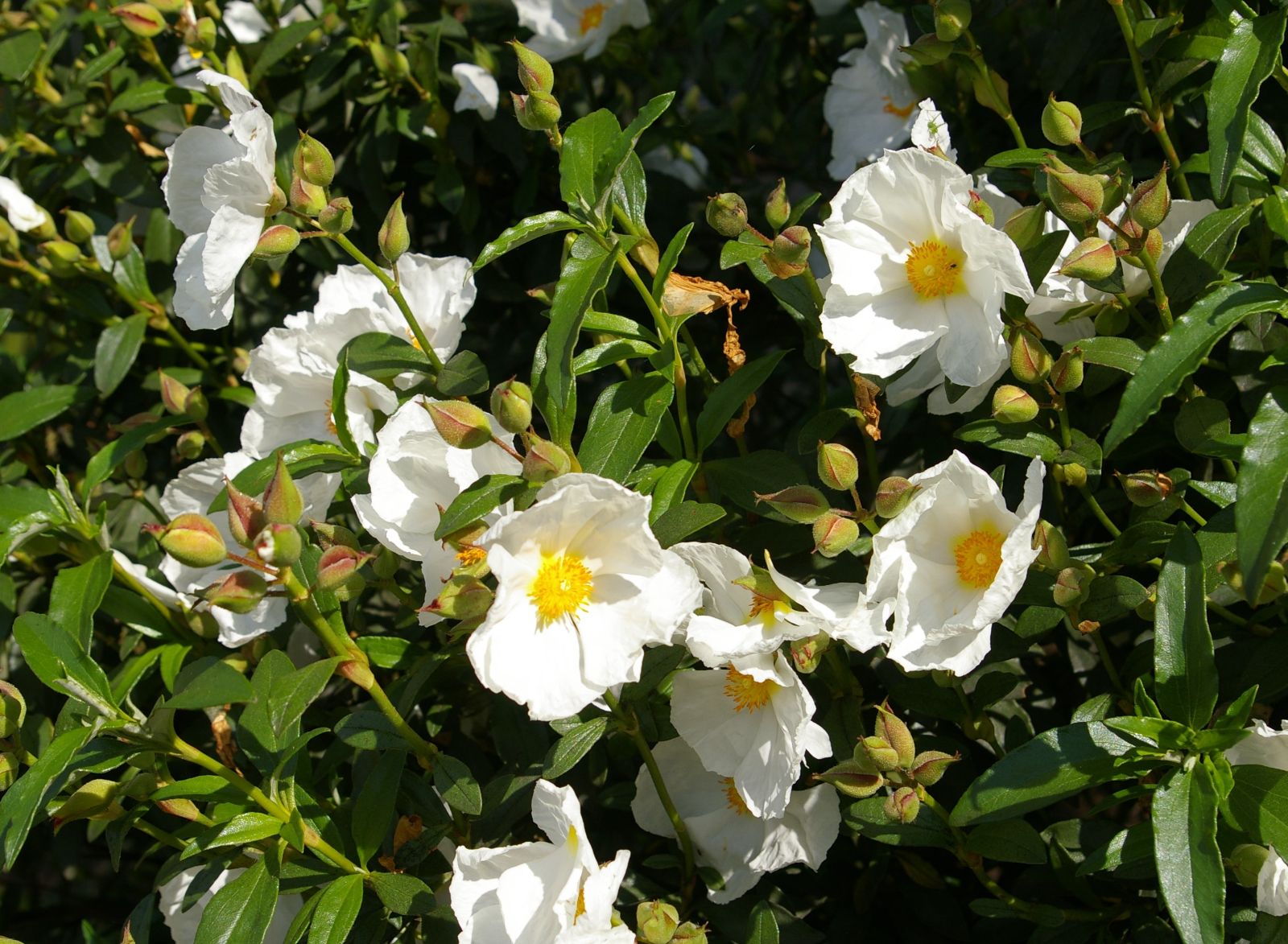Cistus × cyprius
Credits
Article from Bean's Trees and Shrubs Hardy in the British Isles
Recommended citation
'Cistus × cyprius' from the website Trees and Shrubs Online (treesandshrubsonline.
Genus
Infraspecifics
Other taxa in genus
- Cistus albidus
- Cistus clusii
- Cistus × corbariensis
- Cistus creticus
- Cistus crispus
- Cistus × florentinus
- Cistus hirsutus
- Cistus ladanifer
- Cistus laurifolius
- Cistus × laxus
- Cistus × lusitanicus
- Cistus monspeliensis
- Cistus × obtusifolius
- Cistus palhinhae
- Cistus parviflorus
- Cistus populifolius
- Cistus × purpureus
- Cistus rosmarinifolius
- Cistus salviifolius
- Cistus 'Silver Pink'
- Cistus symphytifolius
An evergreen shrub of vigorous, bushy habit, up to 6 or 8 ft high; young branches clammy and shining with fragrant gum. Leaves narrow, lance-shaped, 11⁄2 to 4 in. long, 1⁄3 to rather over 1 in. wide, wedge-shaped and three-nerved at the base, tapered to the apex, wavy at the margin, dark dull green above, grey with down beneath; stalk 1⁄8 to 1⁄2 in. long, the bases clasping the stem, shining and sticky with gum beneath, like the midrib. Both surfaces of the leaf are clammy. Flowers several (three to six) in a long-stalked cluster, terminating short side branches; each blossom about 3 in. across, white, with a conspicuous blood-red blotch near the base of each petal. Sepals three, yellowish, scaly, and, like the upper part of the flower-stalk, rather hairy. Bot. Mag., t. 112.
The native country of this beautiful rock rose is generally given as Cyprus, but if, as is certainly the case, it is a hybrid between C. ladanifer and C. laurifolius, then the plant described by Lamarck cannot have originated in Cyprus, as C. ladanifer does not extend so far east. Hybrids between these two species (which are closely allied) are fairly common in France and the Iberian peninsula but the cultivated plants appear to be a clone, of unrecorded origin. Between the parents it is in many respects intermediate. It has the large, crimson-blotched flowers, the glabrous stems, and the scaly sepals of C. ladanifer, but the several flowers on a stalk and the broader-stalked leaves show the influence of C. laurifolius. In hardiness it is about intermediate, and is only injured by the very severest of winters. I consider it the most beautiful of all the cistuses we can grow out-of-doors. The leaves become metallic grey in autumn. For hot dry banks it is unsurpassed. The several flowers in a cluster are individually as beautiful as those of the solitary ones of C. ladanifer, and the shrub has much of the hardiness of C. laurifolius. Old plants assume a graceful, spreading habit. It thrives remarkably well in Notcutt’s nursery at Woodbridge, in Suffolk.

